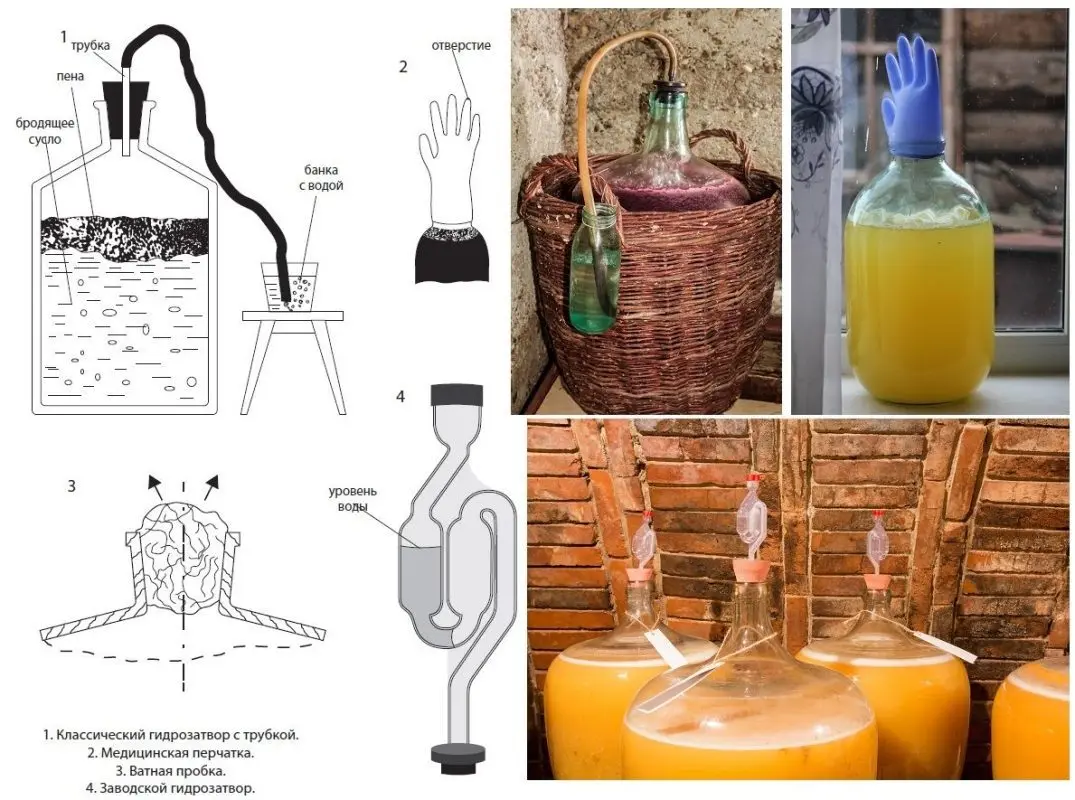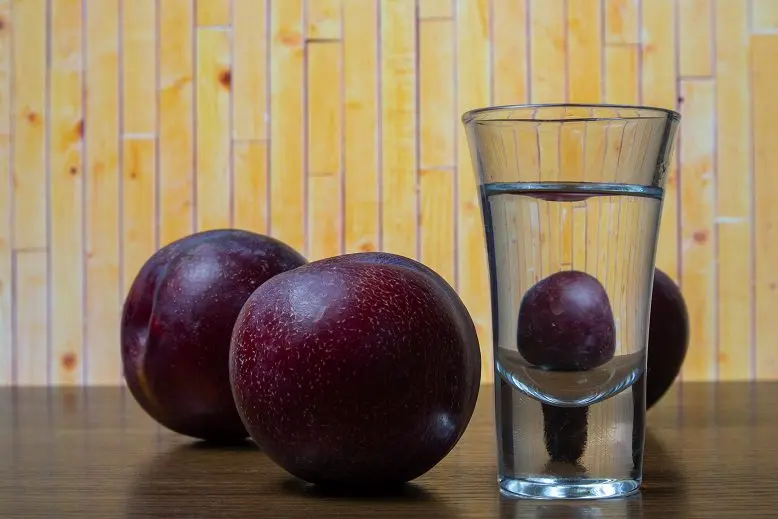Plum moonshine not only has an excellent taste, but also a pleasant aroma that most other fruit distillates do not have. Next, I will tell you how to make homemade mash from plums, then overtake it while preserving the aroma and taste of the fruit. The recipe is simple, but before you start cooking, I advise you to find out all the nuances.
A ripe plum of any variety will do, the sweeter the better. First, the fruits must be sorted out, removing spoiled and rotten ones that can spoil the taste. Use only the highest quality raw materials.
Ingredients:
- plum fruits – 12 kg;
- sugar (optional) – 1,5 kg;
- water – 10 liters;
- yeast (optional) – 100 grams pressed or 20 grams dry.
The average sugar content of plums is 10-13%, which means that to obtain 1 liter of pure plum moonshine (without sugar) with a strength of 40%, a minimum of 9-11 kg of fruit is required. In turn, 1 kg of sugar increases the yield by 1,1-1,2 liters (40%), but slightly reduces the quality. Whether or not to add sugar, everyone decides for himself, based on his vision of the balance between the quantity and quality of moonshine. My option is described in the ingredients.
It is better not to add dry, pressed and alcoholic yeast, as they have a bad effect on the aroma of fruit raw materials. The process will be started by wild yeast that is on the skin of the fruit (plums cannot be washed), but the fermentation period will increase by 2-3 times. If time is running out, I advise you to wait.
Plum brew recipe
1. Unwashed (if the fermentation is based on wild yeast), peel the plums and mash until a homogeneous slurry is obtained. In many recipes, it is recommended not to remove the bones, but I still advise getting rid of them, otherwise the moonshine may be a little bitter or smell unpleasant.
Ideally, you still need to remove the skins, leaving only the pulp for the mash. The fact is that during distillation, the skins often burn, worsening the taste. But extracting the pulp is a laborious process, so we will simply filter the finished mash through gauze.
2. Add sugar to the plum liquid (optional).
3. Dilute the yeast in warm water (optimal temperature 25-29°C), pour into the wort (optional).
4. Add water. The recipe says 10 liters, but this is an approximate amount, depending on the type of fruit and sugar. Task: bring the mash from the plums to a liquid consistency and a total sugar content of no more than 20% (at first it will be very thick). Usually this requires 8-9 liters of water, do not be afraid to pour in more, this will not affect the quality.
5. Install a water seal on the neck and place the container with mash in a warm (18-28 ° C) dark place. The fermentation process on ordinary yeast lasts 7-10 days (on wild yeast – 20-45 days), then the mash brightens, becomes bitter in taste, sediment appears at the bottom, and the water seal stops emitting gas.

6. Filter the washed out mash: pour through several layers of gauze into a distillation cube, trying not to shake the sediment at the bottom.
Getting moonshine from plums
7. Distill the mash for the first time, selecting the main product, until the fortress in the jet drops below 30%. The distillate may be cloudy, this is normal and easy to fix.
8. Measure the strength of all moonshine. Determine the amount of pure alcohol. Do not clean with charcoal or other methods to leave a slight plum aroma.
9. Dilute the distillate with water up to 20%, distill again. The first 8-12% of the yield from the amount of pure alcohol is collected separately and poured. This is a harmful fraction called “heads”, it contains hazardous substances and is used only for technical needs.
10. Select the main product until the strength in the jet drops to 40%.
11. Dilute the resulting moonshine from plums to the desired strength (usually 40-45%). Before tasting, seal tightly and leave for 2-3 days in the cellar or refrigerator to stabilize the taste.










